The history of the Christmas tree
For many people, having a Christmas tree is a lovely Christmas tradition, but why did people start to bring a green tree into their homes?

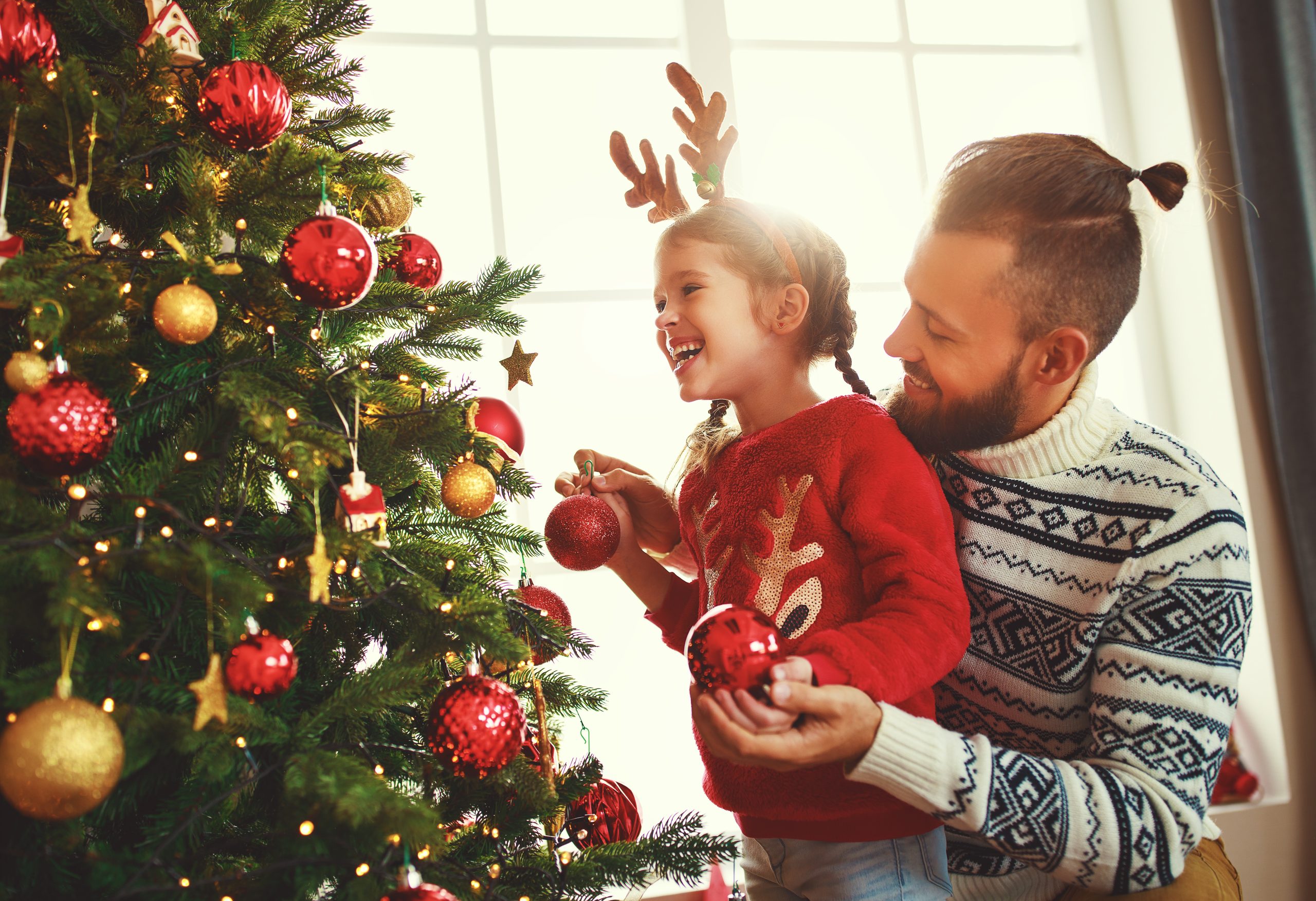
The tree as an important symbol
Trees are an important symbol in many cultures. In Norse mythology, the world tree Yggdrasil was important. It symbolised life during the winter when the rest of nature went to sleep.

Hender som holder et spirende furutre ute i naturen
Green plants become an important decoration
At the Viking Christmas feast “jólablót”, people would decorate their homes with evergreen trees and bushes like juniper, pine and holly. The green plants were supposed to provide protection against ghosts and evil spirits. The Vikings believed that supernatural beings lived inside the branches and took them inside so that they wouldn’t freeze in the winter.
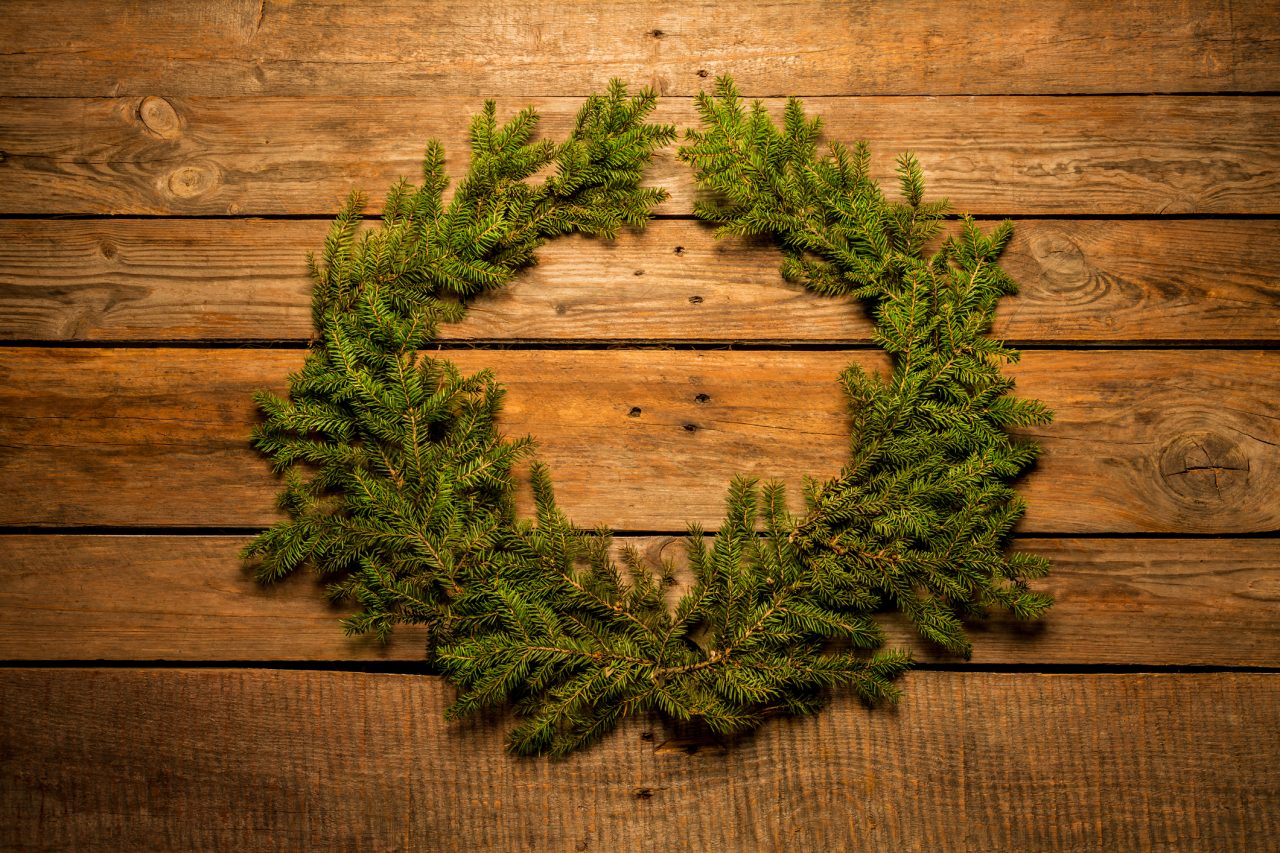
Julekrans lagt på en tre bakgrunn
The tradition of the Christmas tree
The Christmas tree tradition as we know it today started in Germany. The Germans started to decorate Christmas trees as early as the 16th and 17th centuries, but it wasn’t until the 19th century that this tradition came to Norway.
The first known Christmas tree in Norway was brought in by a family living in Christiania in 1822. They had been visiting some relatives in Denmark and Germany and had seen Christmas trees there. They liked the tradition, and brought it home with them. A few years later, more families followed and did the same. The tradition of the Christmas tree first started with priests, teachers and the richest people in society. But eventually the tradition spread to the whole population.
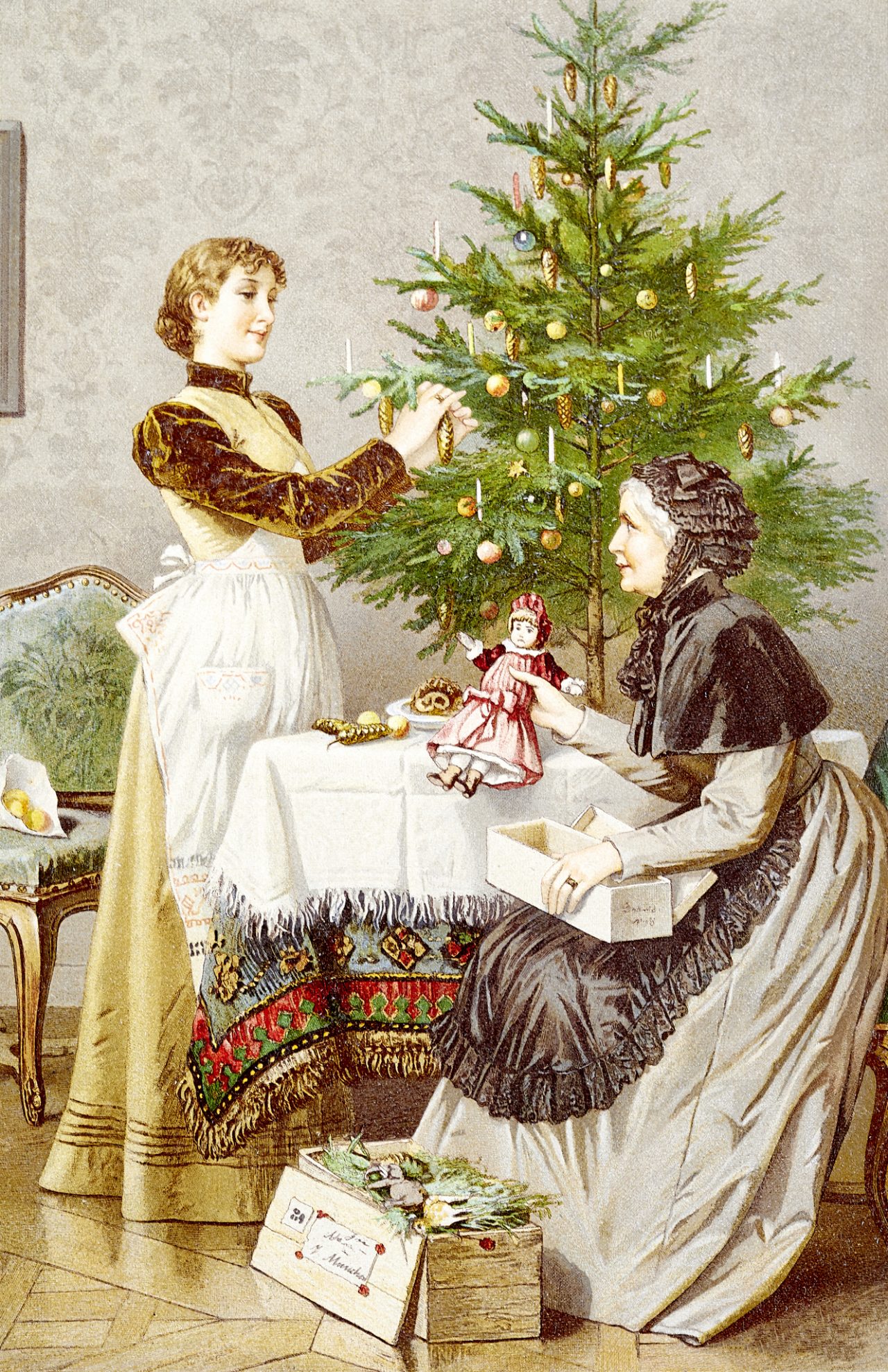
A pagan custom
Not everyone was positive about this new tradition. Some people believed it to be a pagan tradition which did not fit in. Others saw the green tree as a symbol of endless life, which is something that is central to Christianity. This is how the Christmas tree became one of our most important Christmas traditions.
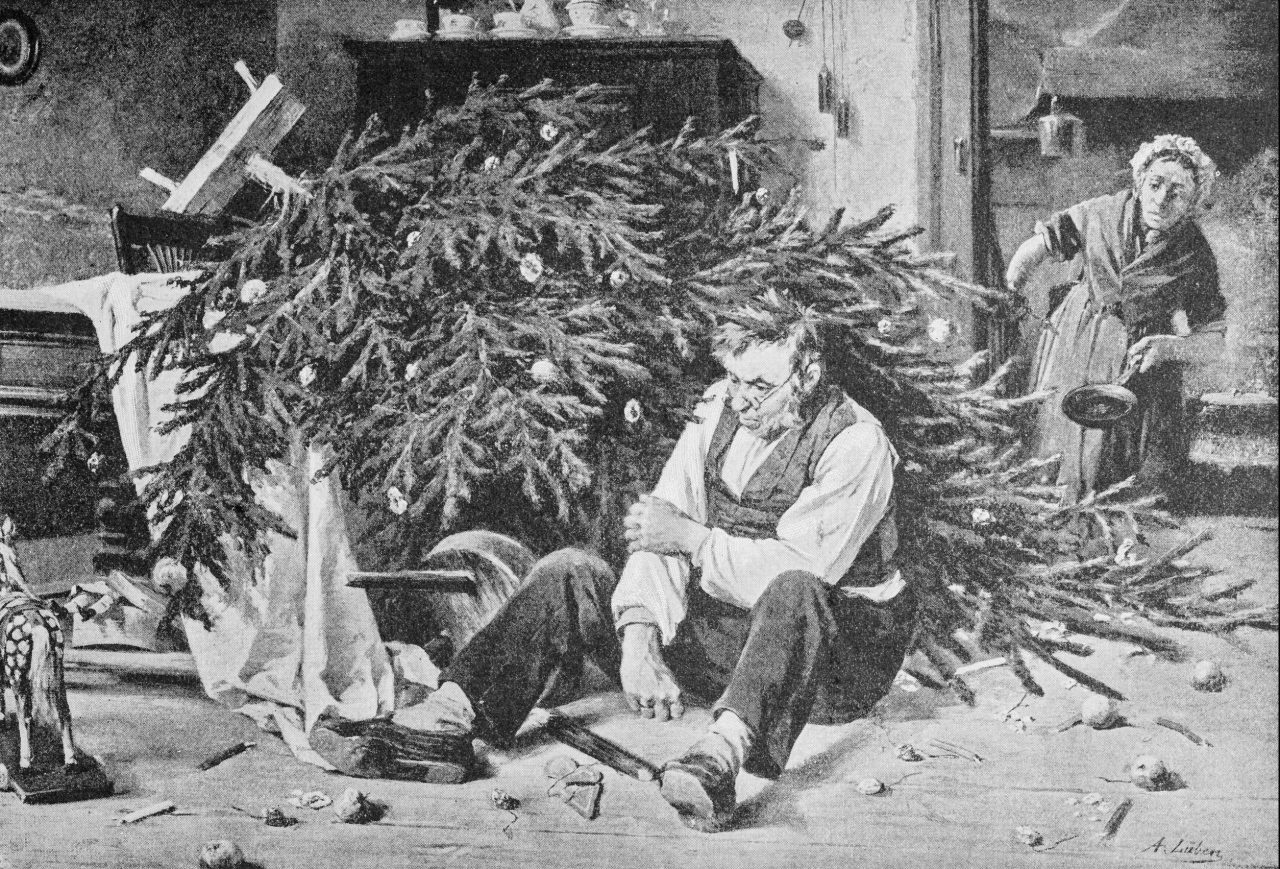
Illustrasjon av et juletre som har falt
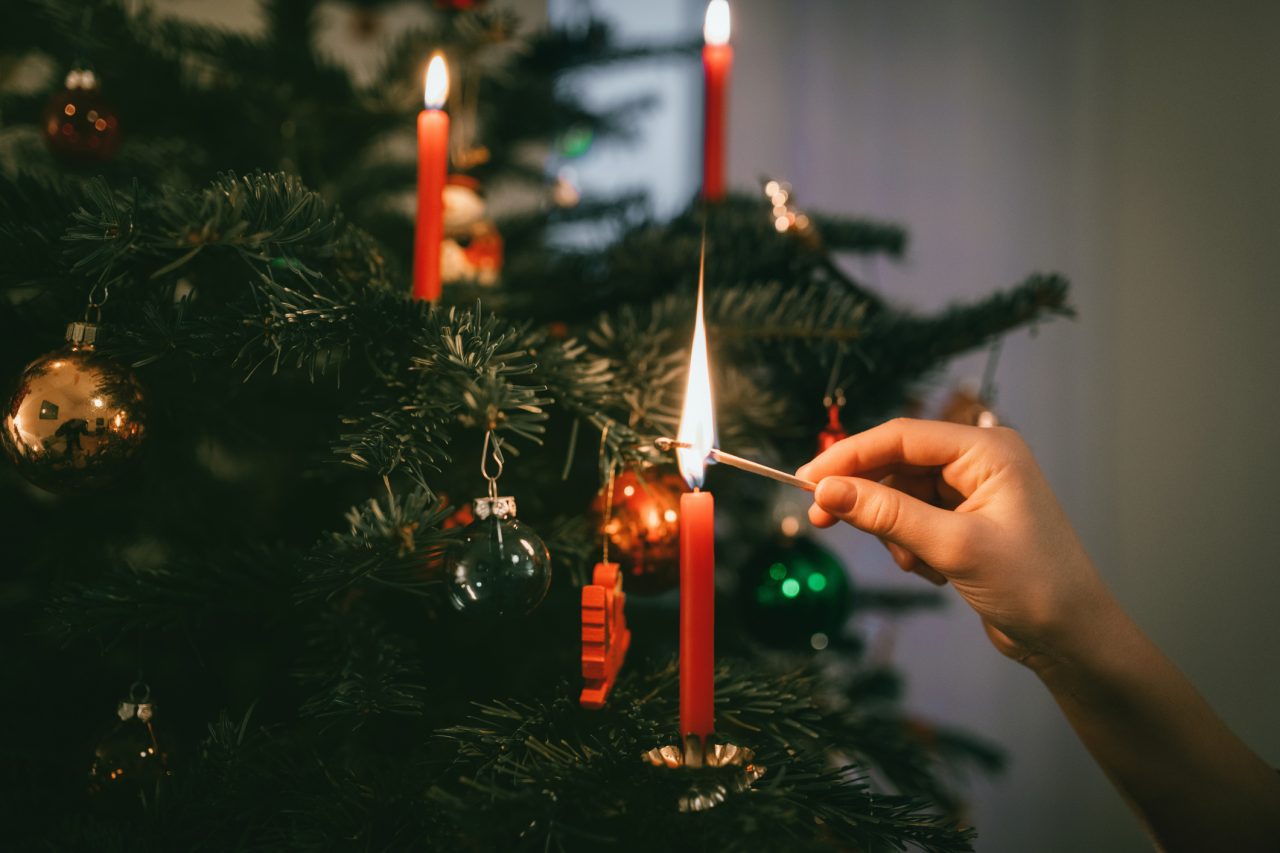
Levende lys på juletre som blir tent på
Star light, shine bright
The most common ornament to have on the top of the Christmas tree is a star. But some people have also used angels or other figurines on top of their tree. The star symbolises the star that shone over the stable in Bethlehem where Jesus was born. The first stars were made out of tin foil or silver glitter.

Edible decorations
The first ever Christmas tree decorations were cookies (often gingerbread men) and apples. Sweet treats such as nuts, raisins or dried fruit were placed in Christmas baskets made of paper or straw. On the 6th day of Christmas, you could eat the treats from the tree.
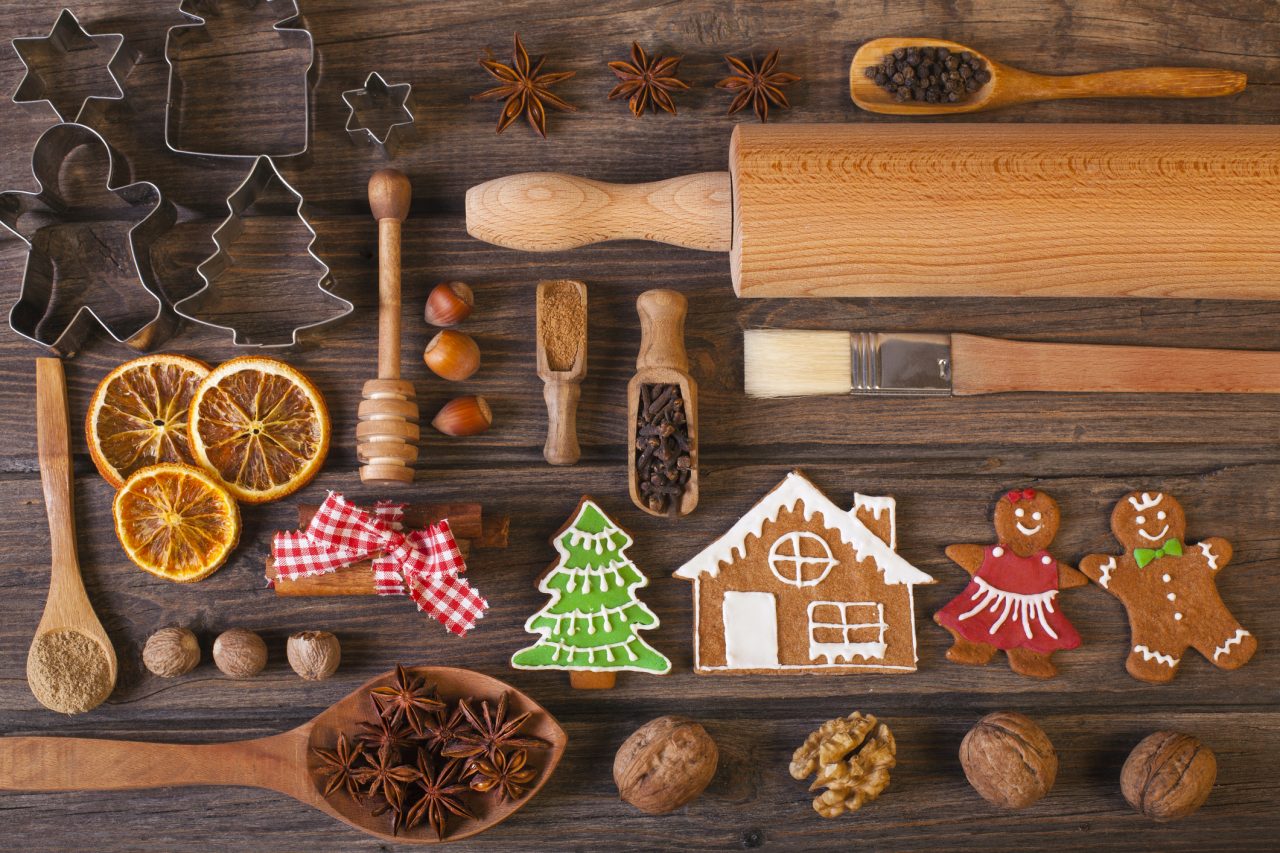
Julebakst lagt ut på et tre bord
Christmas tree decorations
Long strands of glitter, called tinsel, were also among some of the first decorations used. It was used in France from as early as the 16th century. Copper wire was pulled out into thin strands and rolled flat.
Other common decorations were paper flowers and tin stars and crosses. Baubles of glass and figurines (shaped like apples, musical instruments, flowers and Santas) also become popular. Eventually, hanging flags on the tree also became common. Later, papercraft decorations and paper chains were also made, a tradition that many people still have today. As people started to become financially stronger, decorations were purchased and became common on the modern Christmas tree.
⬅ Illustration of Queen Victoria and Prince Albert of England and their children. December 1848.
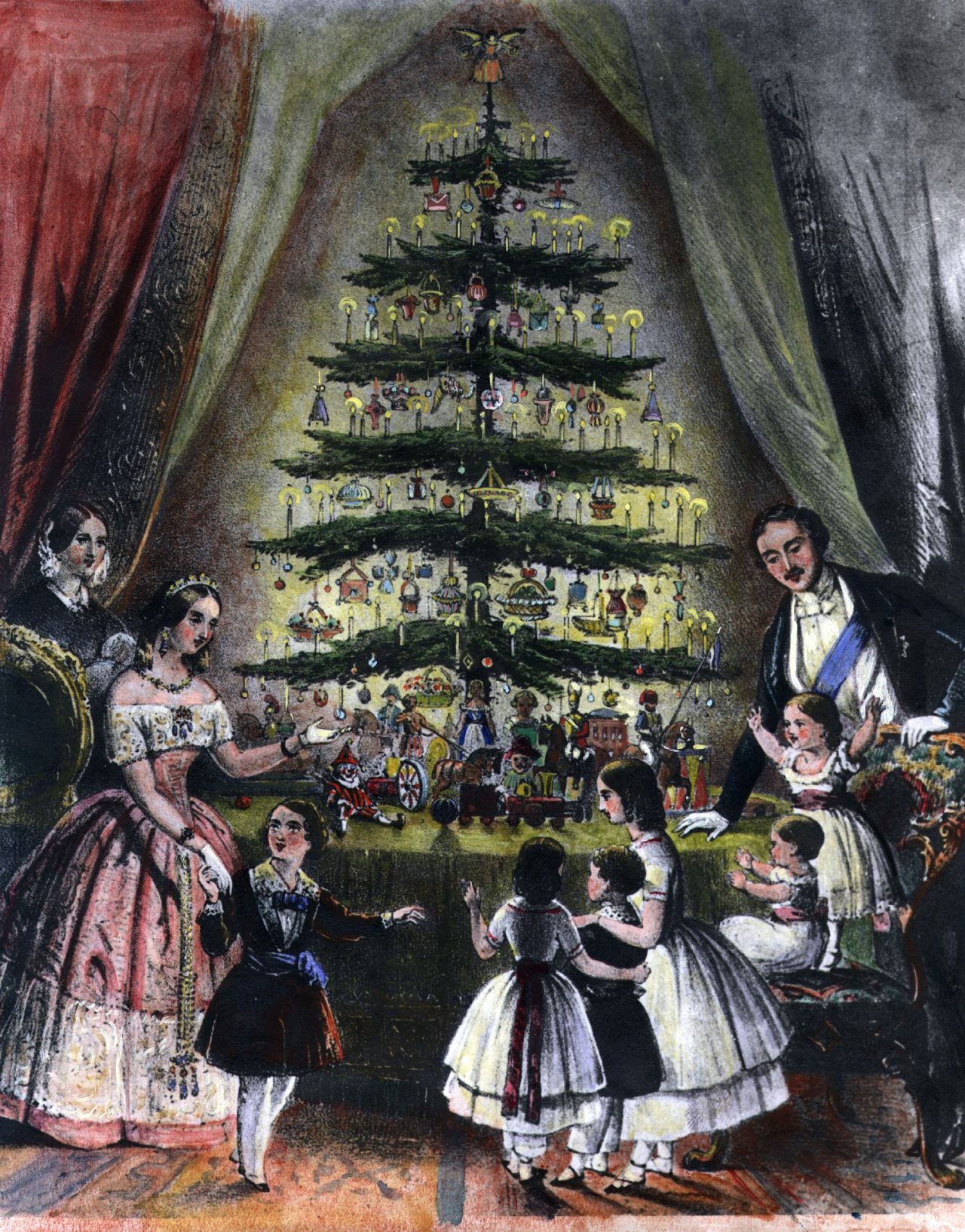
Life in the Christmas Tree
When should the tree be decorated?
In Norway, the tree was originally decorated on 23 December. This was a sign of the start of the Christmas season. Nowadays the tree is decorated earlier and earlier.
In today’s world, the whole family will often take part in the decoration, but this hasn’t always been the case. In the 19th century, especially in the more upper-class homes, it was traditionally the adults who decorated the tree and only let the children see the tree once the lights were lit.
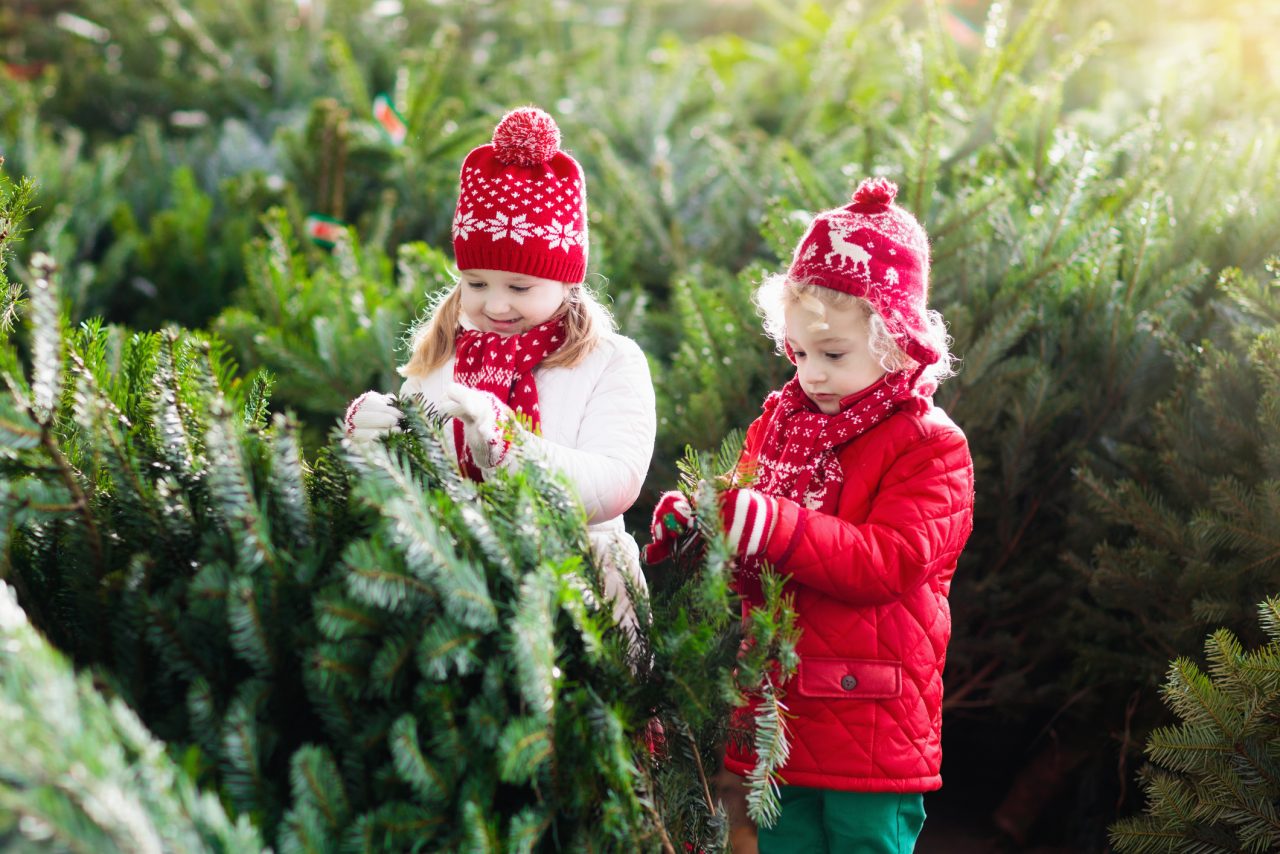
To barn som velger ut et juletre
The Norwegian “Juletrefest”
The Norwegian tradition “juletrefest” (Christmas tree party) started in Norway in the mid-19th century. It was mainly teachers and priests who made this a tradition. This led to the Christmas tree traditions becoming more known in the villages. The first Christmas tree party that we know of was at the Student Union in Christiania in the 1840s. Dancing around the Christmas tree and playing games such as London Bridge is Falling Down and What’s the Time Mr Wolf became very popular. In the 20th century, it became common for Santa Claus to make an appearance at the party with gifts or sweets for the children.
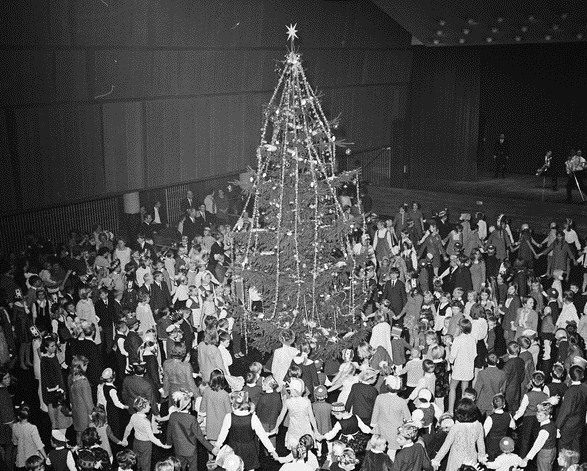
Juletrefest i 1969
The Spruce for London
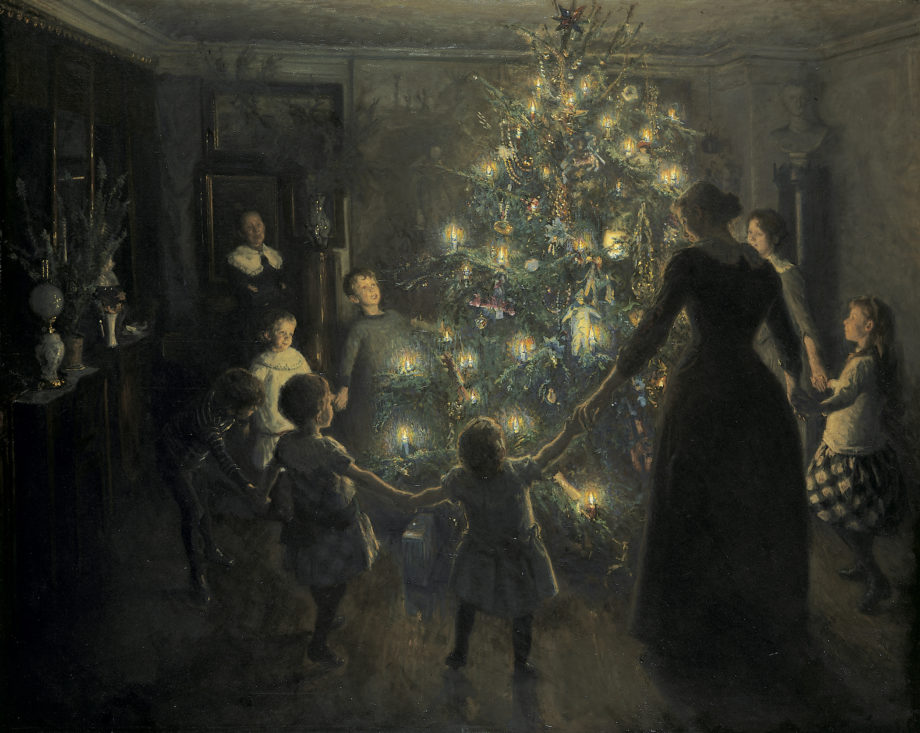
Illustrasjon av en familie som går rundt et juletre av Viggo Johansen
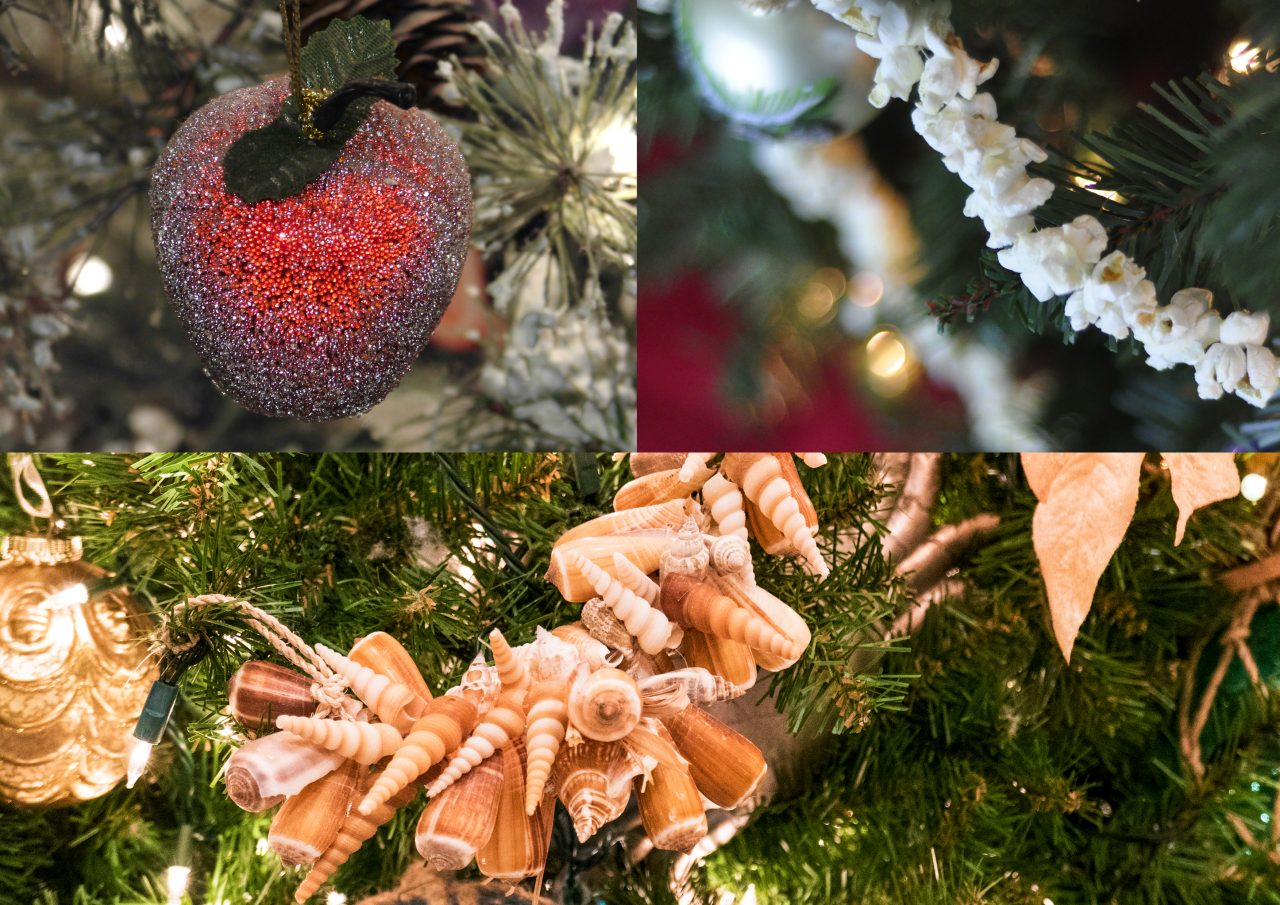
Juletre pynt i ulike land, rødt eple, popkorn og skjell
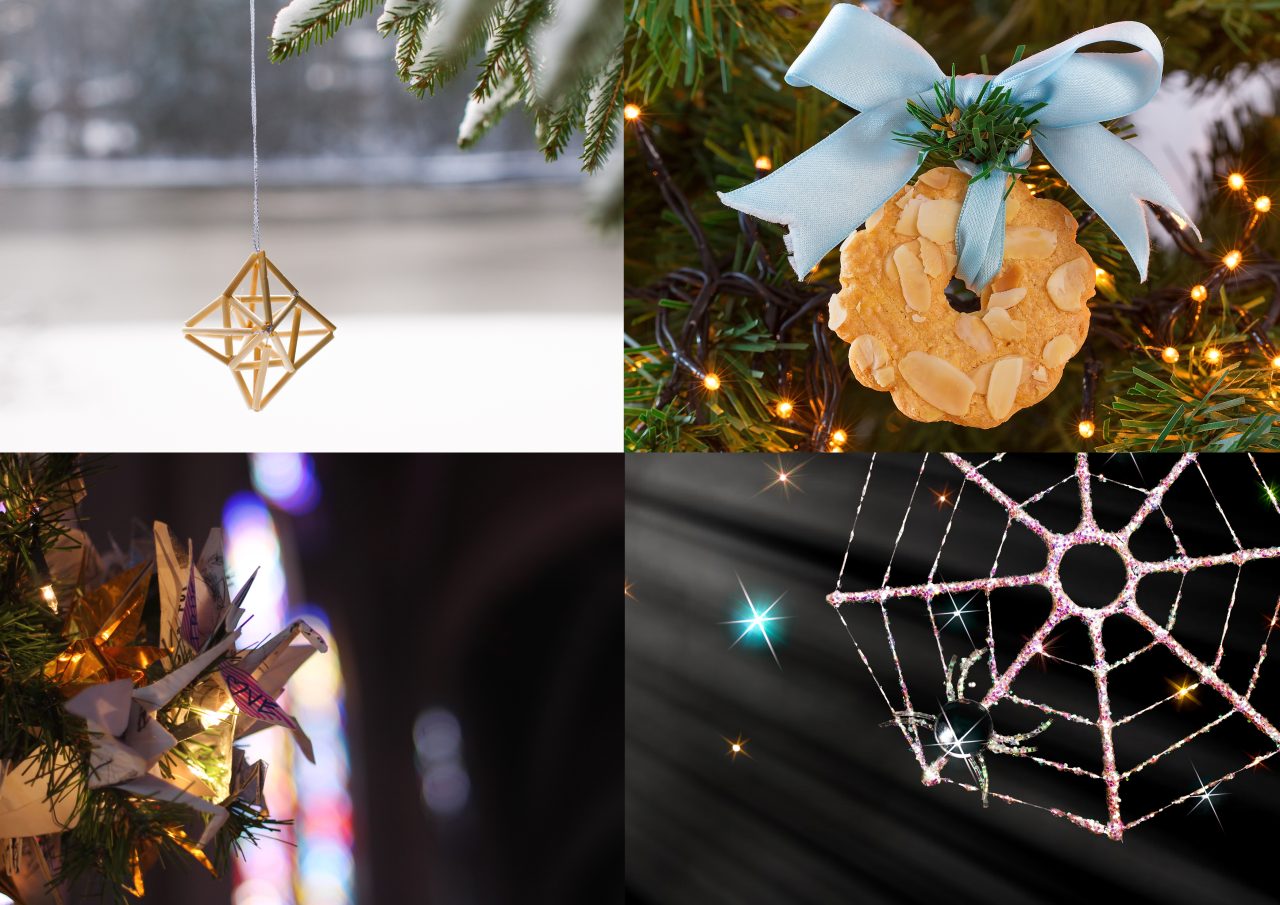
Juletre pynt i ulike land, himmeli, kerstkransjes, origami og spindelvev med edderkop
Sources:
- Magisk jul (2020)
Orage Forlag AS
- Housebeautiful.com (hentedato: 15.11.2022): 12 Christmas tree traditions around the world
https://www.housebeautiful.com/uk/decorate/a2812/christmas-tree-traditions-world/
- Stovner, Ina Louise: juletre i Store norske leksikon på snl.no.
Hentet 6. november 2020 fra https://snl.no/juletre
- Finland.fi (29.11.2022): The original Finnish Christmas ornament
https://www.google.com/url?q=https://finland.fi/christmas/the-original-finnish-christmas-ornament/&sa=D&source=docs&ust=1669734160759962&usg=AOvVaw0IBc1dngYrhbt-ELIzC4Q7
- Housebeautiful.com (15.11.2022): 12 Christmas tree traditions around the world
https://www.housebeautiful.com/uk/decorate/a2812/christmas-tree-traditions-world/
Media Rights:
-
-
Getty Images
-
Getty Images
-
Getty Images
-
Getty Images
-
Getty Images
-
Getty Images
-
Getty Images
-
The Webster Museum
-
12 News – YouTube
-
Getty Images
-
Oslo museum
-
On Demand News – YouTube
-
Viggo Johansen
-
Getty Images, Adobe Stock
-
Getty Images, Adobe Stock
-

